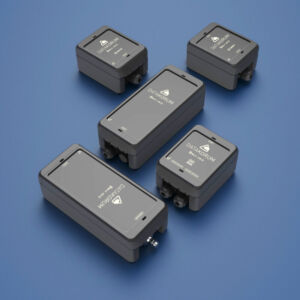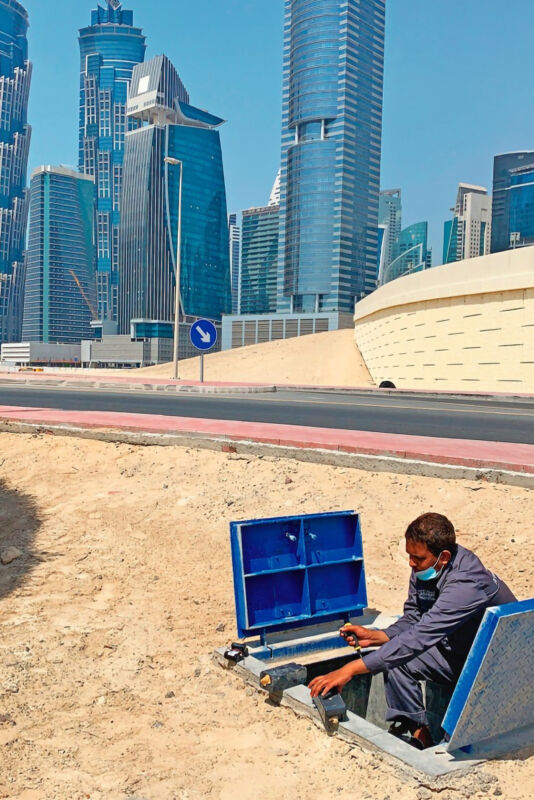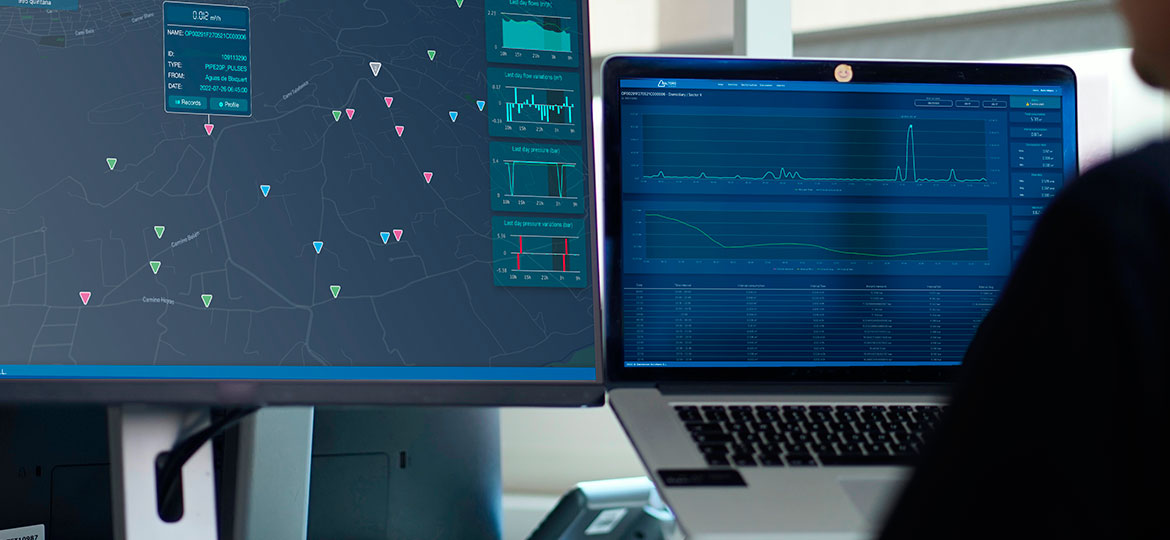Transforming Water into Smart Data
- Almar Water Solutions is working to strategically position itself in the water technology business. Last March, the Company signed an agreement with the digital transformation company DATAKORUM to become a shareholder o provide innovative digital technology solutions to the water sector, complementing its Industry & Technology division.
- Now together, both companies are bringing cutting-edge latest technologies to provide optimal and reliable service in water infrastructure management. DATAKORUM has created a universal “end-to-end” IoT solution to digitally transform the entire water infrastructure without the need to change any of the existing devices.
The digitization of water is a major challenge, reducing losses in supply infrastructures, saving water and energy, and optimizing supply have become global objectives. For this reason, it has become a strategic priority for governments and public, private and mixed companies supplying cities.
Cities are home to the largest number of inhabitants, with more than half of the world’s population now living in cities with more than 300,000 inhabitants, and this growth is accelerating. By 2050, cities are expected to be home to 70% of the world’s population.
Similarly, urban water infrastructures have grown in parallel over the years to meet the needs of human consumption, industry, and the maintenance of parks and gardens.
During their long history, these infrastructures have incorporated a large number of assets for their correct operation and to supply, manage and measure water consumption effectively. Digitalization has made it possible to integrate new technologies throughout the entire cycle, and the number of suppliers that have been involved during this time, as well as the types of devices, has been very broad and heterogeneous.
Each of these manufacturers has used different communication protocols over the years, depending on the values obtained and the technologies available. As we can imagine, these protocols range from the oldest analog protocols, such as the pulse protocol, to the most recent Wireless M-Bus, most of them developed long before the popularization of the Internet.
Today, in most cases, it is necessary to move technical staff to the different locations of the reading devices to collect the data, store it and then process it in the management platform, with the human cost, energy consumption, and emissions generation that this entails. In addition, this approach leads to information silos, making it extremely difficult for internal systems to connect and feed into each other.
At best, the result is a disparity in the frequency with which data is managed, ranging from bi-monthly to daily. In the absence of uniform metering, it is very difficult to assess the real efficiency of the infrastructure, i.e. losses in the network, unmetered water, and unbilled water.
Aware of this major challenge, DATAKORUM, which has been leading innovation in the development of data connectivity based on 5G technology (NB-IoT and CAT-M1) for the water, electricity, and mobility sectors since 2018, has created a universal “end-to-end” IoT solution based on the CaaS (Connectivity as-a-Service) model, to digitally transform the entire infrastructure without the need to change any of the existing devices, achieving total integration between sensors and platforms, which is key in these large infrastructure projects with a multitude of references and manufacturers that must be connected to a single management system, and which require a high-level cyber security layer. Until now, none of the solutions on the market offered this high level of standardization, stability, and data security.
Data collection is done through PIPE Multiprotocol Gateways, which connect in a quick and easy Plug&Play way to meters or sensors of any manufacturer with any communication protocol, collecting data at defined intervals and sending it to the management platform through 5G wireless communication (NB-IoT and CAT-M1). For this process, DATAKORUM provides the installer with the BASE CAMP deployment software tool, which allows installers to easily configure, connect and send data to the management platform to verify that the device installation has been successful.
 Multi-protocol PIPE gateways with 5G communications technology
Multi-protocol PIPE gateways with 5G communications technology
Thanks to 5G technology, we get a wide coverage range with high penetration capability indoors and underground, its high energy efficiency allows for longer battery life, and in terms of security, we get SIM-based authentication functions and high-level encryption for secure data transfer.
In this way, uniform and periodic data is sent to the TRANGO IoT Platform, a device management software interoperable with other platforms, which analyses the status of the installation and the health of the devices, manages the data received in real-time, allows remote firmware updates (FOTA) and integrates with any management platform.
At DATAKORUM we believe that digital transformation is not just for large companies, it must be accessible to all types of companies, even for those small water companies that do not have their platform or that want to improve their existing one, we offer the BALTORO Platform, a complete, highly scalable and economically competitive end-to-end metering solution. Through this, we can read meters and sensors, visualize the infrastructure on the map, monitor the quality of service: flow and pressure, analyze night-time water consumption and detect possible leaks, receive an automated daily report on the status of the installation and consult the graphs and measurement history.
The capabilities of our solutions have already been successfully tested in the field with water utilities in Spain, Germany, Dubai, and Abu Dhabi, where DATAKORUM is currently one of the main suppliers for e&’s AMI platform, which will supply more than 200,000 5G gateways in two years.

The consequences of climate change impact first and foremost access to water and it is essential:
- Increasing water sustainability and productivity is essential for the sustainability of societies, economic activity, and agriculture.
- Digitising infrastructures and transforming them into smart and efficient systems will provide further optimization of supply by improving network efficiency with clear use cases:
- Detecting potential leaks and reducing non-revenue water,
- Improved infrastructure maintenance through automated alerts and warnings of incidents.
- Reducing costs and emissions by reducing travel time
- Shortening intervention and service interruption times.
- Reducing energy consumption by having a more efficient installation and improving services for consumers
There is no time to lose, the technology is already accessible, and easy to implement, and the returns in savings make the investment quickly amortizable, both in Opex and Capex models. Let’s pursue excellence in 0% wastewater.


